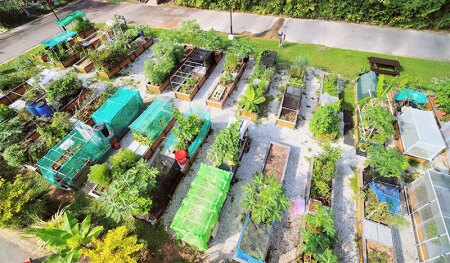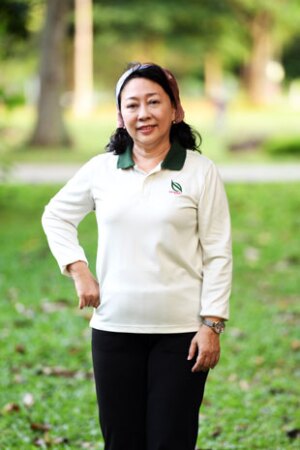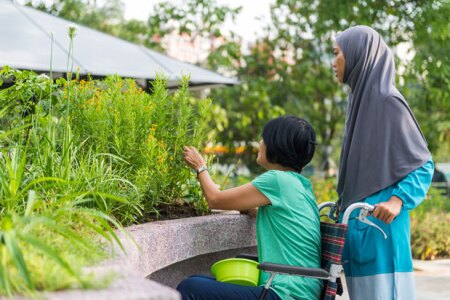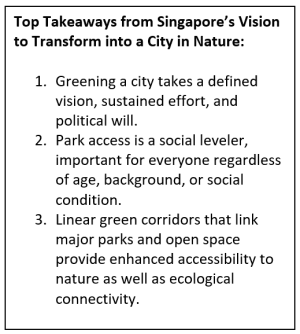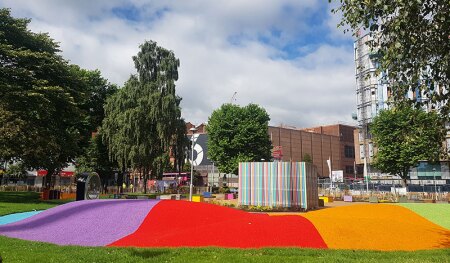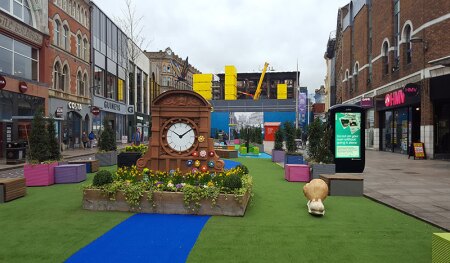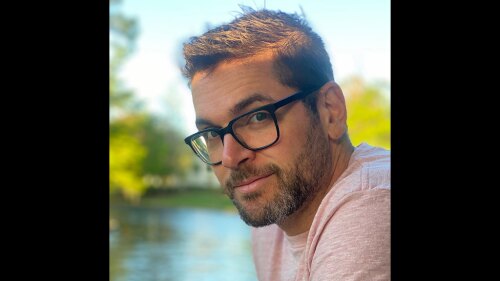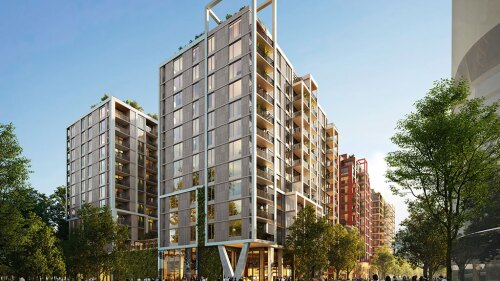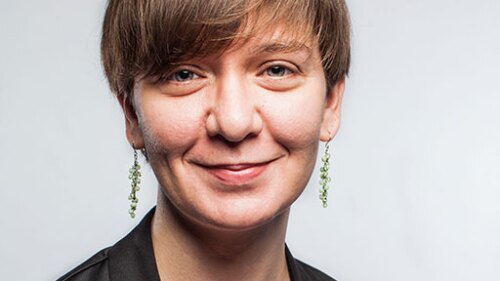This interview was conducted in June as part of a series designed to celebrate park visionaries and share inspiring and practical insights into their perspectives, challenges, and advice. Follow the series to learn from developers, planners, and other leaders creating innovative parks.
Kartini Omar is group director of parks development and Jurong Lake Gardens at the National Parks Board of Singapore (NParks). Her work involves the development of parks and green corridors across the city-state. She has a passion and keen eye for plants and greenery that she developed while working at NParks’s plant nursery. She also co-authored 1001 Garden Plants in Singapore, which is intended to increase knowledge of and interest in plants, as well as seed a gardening culture in Singapore.
UL: Parks can mean different things to different people depending on their experiences. How do you define a park?
Omar: To me, a park is firstly and simply a green space that people can go to either individually or with family and friends to reap the positive effects of nature. It’s a place for respite as well as activities that improve health and quality of life. More than 80 percent of Singaporeans live in high-rise buildings, so parks are extremely important as communal spaces that provide access to nature and its benefits.
We have “therapeutic gardens” that are specially designed to facilitate visitors’ interaction with nature and provide mental health benefits. We are doing therapeutic horticulture to improve cognitive functions and help with conditions like dementia, depression, and anxiety. Our greening work includes efforts to restore and enhance habitats, connect parks via green corridors, and integrate nature into our urban landscape. These initiatives result in a healthier ecosystem, cooler urban temperatures, and rich biodiversity. We are implementing more natural landscapes and involving the community in various greening initiatives, like an island-wide tree-planting movement.
What has been your personal journey as a park planner and what specific skills and knowledge do you bring to the position?
I started my career in a plant nursery. I was exposed to the great diversity of plants and was able to source new and interesting plants to add vibrancy to the landscape. After 20 years working in the nursery, it was a natural progression for me to work in parks. I spent my first five years in operations and management, and then moved to park development. Over time, the department’s focus has shifted from needing to “green” Singapore as quickly as possible to now providing ecological diversity through the planting of flowering trees and shrubs and the development of a Park Connector Network. We also encourage new real estate developments to build green roofs and walls in their projects and engage the community in greening efforts.
I understand that Singapore is doing research on the effects of greenery on people and the community. Can you expand on some of the findings you have discovered?
During the COVID-19 pandemic, more people visited our green spaces than ever, and [the pandemic] impacted the way that people live in densely populated cities. NParks has been conducting multiple research projects to quantify the benefits of greenery on Singaporeans, with the aim of optimizing the benefits that parks and green spaces bring to health and mental well-being. A study was done between May and July 2021. We worked with the Mind Science Centre of the National University Health System to study people’s mental resilience. Over 5,700 participants were actively engaged in weekly gardening. Across all age groups there was evidence that participants showed higher mental resilience than those in the general community. Another study showed how therapeutic horticulture benefits seniors by significantly reducing anxiety and improving cognitive function and sleep patterns.
For preschoolers, it has been found that using natural elements as play materials is beneficial for children’s development. NParks has thus developed “nature playgardens.” The playgarden at Lakeside Garden of Jurong Lake Gardens provides opportunities for children to imagine and mimic the actions of animals that inhabit a swamp forest. Initially there was a concern that the children wouldn’t welcome such spontaneous play, but they intuitively knew how to interact, and the play was much more imaginative than what occurs in prescribed activities.
The agency is involved in so many projects, from active parks to natural areas, to biophilic projects and park connectors. Can you describe one that you think has been most impactful?
We are developing a third national garden away from the city core, in the heartlands, and it is important because it has transformed a historically industrial area into an attractive, livable community. It’s called Jurong Lake Gardens (JLG) and is a 90-hectare (222.4 acre) project that won a 2021 ULI Award for Excellence. The project brings nature back into the urban environment by restoring a freshwater swamp forest habitat that once stood on the site. The first phase, Lakeside Garden, was completed in 2019 and the second phase of development is in progress.
The project involved extensive citizen engagement within the local Jurong community as well as throughout the island with roving exhibitions. There were suggestions to keep the serenity and tranquility of the space while others asked for more vibrancy with active programming. Thus, we designed the garden with a green canvas that consists of a variety of vegetation types to provide habitats for biodiversity. We balanced the need for both tranquility and vibrancy by incorporating an activity layer with the more active zone in the north, moving toward a more passive nature zone in the south. The garden is only 30 minutes away from the city and is easily accessible by the Mass Rapid Transit (MRT) system.
Social equity is a critical responsibility of every public park and recreation agency because safe and easy access to parks is a right, not a privilege. How do you handle social equity in your parks?
Singapore is fortunate that it had a founding prime minister who had the foresight and vision in the early nation-building process to develop a Garden City that would provide access to greenery to all. What Singapore has achieved today is a result of many decades of work. It’s a process of sustained and dedicated efforts, not something that happens by chance. Today, we continue to stand by the original vision to evolve into a “city in nature,” a concept that is part of the nation’s sustainable development agenda. To provide access to greenery for all ages and backgrounds, and from all social conditions, is a social leveler. In Singapore, planning and development is not just a whole-of- government effort; we actively work to bring the community into the process so that everyone has a sense of ownership in the outcome.
The pandemic has had a positive impact on parks and gardens. Most other public amenities and facilities like malls and cinemas were closed except for the parks, which remained open throughout the pandemic. Some residents had never seen the need to visit parks, but the constraints of the pandemic led them to seek respite in the outdoors. During the pandemic, we did a survey that found more than 50 percent of people visited parks they had never explored before.
All park projects have constraints on funding and resources, particularly in competition with other city priorities. What would you do if you had access to unlimited funds for park development?
There will always be budget constraints for park development due to competing needs for transport, health, housing, and other services. If we had unlimited funds, we could implement solutions to provide more park connectors and landscaped areas with even more lush greenery and multitiered planting using cantilevering, decking, elevated paths, or other means. We would also like to do more as a living laboratory for new construction methods, materials, and technologies that would shorten on-site construction periods, and reduce manpower needs, material waste, and our carbon footprint.
You have had so much success in greening Singapore. What is a difficult challenge you face in implementing the green plan?
Our continuing efforts to implement the island-wide Park Connector Network are getting increasingly more challenging. The competing needs for roads, drainage systems, and other services and amenities often require us to spend time and effort to consult multiple parties and seek alternative routes. We have a Park Connector Network that aims to have every resident within a 10-minute walk to a park—we now have 370 kilometers (230 miles) of park connectors and want to achieve 500 kilometers (310.7 miles) by 2030.
Building the park connectors requires perseverance and continuous engagement with the community. There are some compromises on how and where the connectors are built, but we generally manage to proceed with the projects because people have come to understand and appreciate the benefits that the park connectors bring to Singaporeans.
What advice would you give to ULI members working to develop parks in their communities?
Making a city greener and more natural requires sustained and dedicated effort and awareness. It is not something that can be taken for granted. There is a need to establish a clear underlying vision, with objectives and goals to be achieved, and develop defined strategies to achieve the desired outcomes.
In the Singapore context, there is a whole-of-government effort to put in place policies to support the greening program, with sustained political will to ensure that the community will have access to quality green spaces for benefits to their health and well-being.
This interview was conducted in July 2022 as part of a series designed to celebrate park visionaries and share inspiring and practical insights into their perspectives, challenges, and advice. Follow the series to learn from developers, planners, and other leaders creating innovative parks.
Callie Persic is a member of Belfast’s city council in Northern Ireland and is leading the city’s Connectivity Programme and its city center project, “A Bolder Vision for Belfast.” Working with cross-sector stakeholders and the community, she brings innovation and creativity to solve problems and find solutions to the challenges facing Belfast.
UL: How do you define a park? How do you think about the role that parks play in communities?
One definition of a park that immediately comes to mind is simply a big green space. Belfast has large green spaces as well as many other types of spaces that fall under the park definition umbrella. We have pop-up parks, linear parks, a network of green open spaces, and active and passive areas. What is most important is how the parks function and how people use them. In Belfast, a post–violent conflict city that is still highly segregated, physical connectivity through open spaces is very important and a way to bring people together. Our new city vision is about a people-focused Belfast that prioritizes connections, health and well-being, climate, and sustainable transport.
What drew you to working on parks and public spaces? How did your earlier career prepare you for the work you do now? What is most important to you about the work?
I am an American who came to Ireland over 20 years ago for my PhD in anthropology, where I focused on women and community development. In school and my early career in community development, I spent a lot of time thinking about how to engage people in their neighborhoods to shape the environment and promote stewardship. A logical next step was to work in city regeneration, which is what I do now. This is especially important in Belfast after the Troubles, a conflict that ended in 1998 with the Good Friday Agreement. During the conflict in the 1970s, permanent “Peace Walls” were built to separate Catholic and Protestant districts of Belfast, and almost 100 of them still separate mainly working-class neighborhoods in these interface areas. Near these walls, there are still derelict areas and blight that could be improved to create a better environment for residents. In a cold and gray climate, beauty and color are particularly important.
One of my first experiences creating meaningful places was as a volunteer in my own interface neighborhood that was surrounded on all sides by derelict land. I was part of a local community group that hoped to create a space where people could meet and share common ground. My neighbors and I created a pop-up garden named Peas Park [a play on words for peace and peas], and 12 years later it is still engaging community members.
Tell me about a parks project you think is most impactful and why it is important.
Peas Park, mentioned earlier, has been very impactful in providing common ground in a segregated neighborhood where a new generation of children could play together. These children did not experience the Troubles, yet they live with some of the resulting separations that still exist. The park provides them with a common space that softens the interface between the two neighborhoods and brings in gardening, art, and play.
I worked on another pop-up space more recently when the historic Bank Buildings burned down in the center of Belfast, causing road closures and limiting the ability to move between different parts of the city. I was tasked with creating an intervention to bring people back to the heart of the city. We created a small but transformational park that was geared to children and families. This park had an impact at strategic and practical levels because people started seeing their city differently and the park shaped new policies and future projects in the city center. People were disappointed when the roads reopened and the pop-up space ended, so we worked quickly to create another pop-up park nearby to meet the new demand. The next space was Cathedral Gardens Park, located in the city center, which transformed a poorly designed, underused open space into a colorful, fun gathering place. The learning from both pop-up experiences shaped the city’s Resilience Strategy and the designs for a more permanent project in Cathedral Gardens.
Both projects involved risk and venturing into the unknown because we were not sure what would work in our new spaces, especially when we decided to put play in the heart of the city. We talked to children and families to create a wish list for what they wanted. The space features new lighting and fun equipment including a giant spinning “hamster” wheel, outdoor musical instruments, and colorful mushrooms on a carpet of rainbow grass. It also features new benches and picnic tables to encourage people to relax in the park’s colorful surroundings. What we found was that people of all ages want to play—children instinctively know what to do, and I even saw grown men in suits running across the colored mounds in the pop-up park.
How do parks and public spaces intersect with issues of racial equity and social justice? How do you think about equitable access to parks?
Belfast has a low residential population in the city center because many people moved to the suburbs during the time of the Troubles, causing the population to decrease. Our current work is focused on regeneration that supports population growth and strategies to make the city center welcoming for families, retirees, and a mixture of all types of people. This is a key element of the new “Bolder Vision” for our city center.
The city still has a lot of healing to do. Neighborhoods around the city haven’t felt the benefits of the peace process equally. The remaining “Peace Walls” separate Catholic and Protestant working-class neighborhoods, limiting access to parks and open space throughout the city. While the walls may provide a sense of safety, there are often unintended negative consequences. In these areas, people often have negative health outcomes and low educational attainment, so parks are needed to improve quality of life.
How do parks promote sustainability, social connections, and public health?
Parks provide refuge for people to improve their mental and physical health. If you are wealthy, you can often have your own private space. In Belfast, high density is common in low-income areas where there is not much private green space, so parks provide an essential space for recreation and social cohesion. At the city [government level], we are also looking at the assets within the parks in terms of resilience and we have adopted nature-based climate solutions throughout our park system. We have focused on designs that provide carbon capture, flood mitigation, and protection from tidal surges. As part of our climate goals, we are working with city partners to plant 1 million native trees across Belfast by 2035.
If you had unlimited funds for parks, what would you do?
I would engage people! I would take time to create a long-term, comprehensive process to bring people of all ages, genders, and abilities together to decide what would improve their quality of life. This is about really reaching out, across ages and demographics, to shape the space based on community engagement. If I had unlimited funds, I would use them to not just shape the design, but start to build that community of future users, create social cohesion, and build connections between people. After any community engagement, I would be sure that aspirations are translated into creative, engaging designs using good quality, durable materials. Critical to all this is the ongoing management and maintenance of these spaces and future costs for upkeep and programming.
What is a park failure you’ve been involved with?
While Peas Park is a success, it has also been my biggest failure. When it opened, it was loved by everyone and people wanted to see positive change in the area. Within a week it was totally vandalized, which was heartbreaking. We decided to challenge the behaviors and had a festival event where local families planted trees in the park. The event helped with community buy-in, and weeks went by without any vandalism. However, in the short term, the initial space didn’t flourish because it was seen as everybody’s space, but it was also nobody’s space. It was not clear whose job it was to manage the park, and no one wanted to take responsibility for the ongoing function of the space. We continued to reshape the structure of responsibilities in the park and the relationships among the people, which is challenging in a voluntary project. Peas Park now has a core group of volunteers who manage the space and organize seasonal events during holidays. This programming has contributed to the success of the park.
How has the pandemic changed the way people interact with parks? What is likely to last?
Parks are part of the wider ecosystem of the city—they are as important as libraries or health centers. During the pandemic, I noticed that groups of teenagers would come to parks to walk together and hang out, so I think we need to provide more opportunities for different groups of people in parks. Just like retail is diversifying and becoming more experiential to meet market demand, parks need to be not just green open space but have a form and function to support new lifestyles. Diversity in park spaces and programming is quite important in meeting the goals of resilience, social cohesion, and access to green space, and I see this demand continuing.
What do ULI members need to know about parks and cities?
Parks and open spaces can be for everyone when they are designed for everyone. Careful upfront consultation and engagement with users is critical. We don’t want poorly designed, leftover spaces, so we need to build in fun and beauty.
Parks are critical social infrastructure and fundamental to creating a livable city. Quality of life is potentially the most important driver in creating spaces for people in cities, so this is about going beyond minimum green space requirements and creating a people-focused environment.
Engagement should be at the heart of placemaking. Developers and businesses can help meet the need for a variety of spaces and should be engaged to help shape these and even act as delivery partners.
Read about the other leaders featured in the Park Visionary series:
- Callie Persic, Belfast, Northern Ireland
- Scott Kratz, Washington, D.C.
- Happy Haynes, Denver, Colorado
- Corey Wilson, East Baton Rouge, Louisiana

